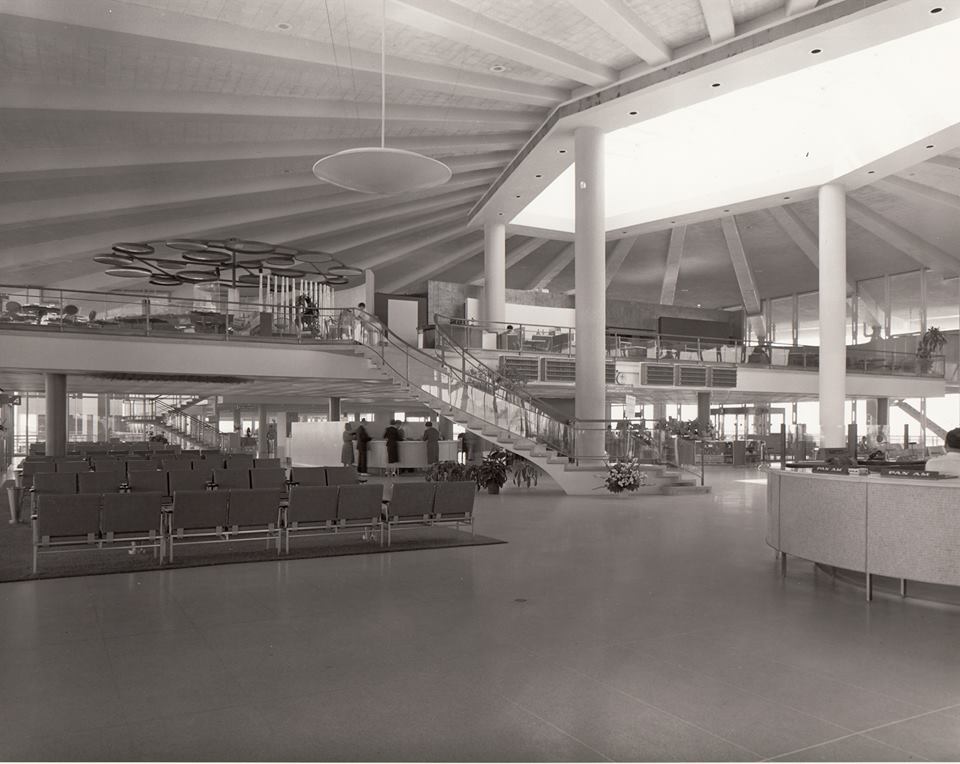 JAMAICA, QUEENS, N.Y. – The historic Pan American WorldPort is not down yet, and the group fighting to save the iconic structure from Delta’s destruction has upped the ante in its come-from-behind campaign to save the building, the interior of which is pictured here (Photo from Josh Stoff, curator of the Cradle of Aviation Museum on Long Island, who shared it with the Facebook Pan Am site).
JAMAICA, QUEENS, N.Y. – The historic Pan American WorldPort is not down yet, and the group fighting to save the iconic structure from Delta’s destruction has upped the ante in its come-from-behind campaign to save the building, the interior of which is pictured here (Photo from Josh Stoff, curator of the Cradle of Aviation Museum on Long Island, who shared it with the Facebook Pan Am site).
The group Save the WorldPort has undertaken a crowd-sourcing program to raise money to buy an ad in The New York Times. So far, it has $5,ooo and has been assisted by checks large and small. They have until July 15 to raise the funds.
The advocacy group has done a miraculous thing by raising this much attention. When the demolition was first announced, Delta and the Port Authority were ignoring the issue, but have now had to confront the possibility that they would be the ones responsible for tearing down what is arguably the only remaining building that President John F. Kennedy and his family actually used, most notably Jackie Kennedy’s trip on Pan Am with Caroline to Italy in 1962.
Two weeks ago, the structure had its biggest boost ever, when the National Trust for Historic Preservation announced that it would put the building on its 11 Most Endangered List. The cause, which was generating tons of publicity around the world, gained dozens of new stories and mentions. However, in a rush job, Delta and the Port Authority of New York and New Jersey began to tear down the approach road to the building, as well as part of its iconic saucer roof. Sadly, a worker was injured and the work stopped temporarily, though asbestos abatement is now being done to the building, which was the home of the first commercial flight of the 747.
The case for the history of the building has been made in dozens of ways, from its engineering to artistry. It appeared as a star in James Bond films, and was an actual backdrop to many historic trips. It also is historic because of the ACTUAL history that happened there. It is well known for being the spot where the Beatles landed, but it was also the scene of dozens of historic flight arrivals and departures, from Jonestown, Guyana to the Shah of Iran. As Pan Am’s terminal to the world’s greatest city and the home of the United Nations, it became an icon.
Repeat: Most importantly, it is the JFK building that was used by the Kennedy family. Does that matter?
Since the Endangered List began, numerous proposals have been floated for the terminal. One of the most interesting ideas is to remove ALL of the back (added in 1970 for jumbo jets like the 747) and keep the smaller rotunda, which is the original part anyway. This is an interesting one from broker Mark Jerusalem:
I think Delta is incredibly well positioned to benefit from this landmark should your company agree to a refurbishment of the “saucer” section of the terminal.
One of my visions for JFK’s Terminal 3 is for Delta to repurpose the original structure that opened in 1960 as an stand-alone facility for your most prestigious long haul flights (LHR including VS code-shares, NRT, transcons including LAX and SFO). DL could provide exclusive lounges and duty free shopping in this terminal with seamless connections between Terminals 2 and 4. As there is limited space to park wide-body aircraft at the “saucer”, just having 5 – 8 gates to serve flights to your most lucrative destinations from Terminal 3 would provide Delta with the kind of competitive and distinctive edge you seek in the NYC market. I picture a terminal as sleek and unique as the refurbished St. Pancras train station in London blending a historically important gateway with contemporary functional design.
I hope that you will consider the numerous proposed concepts and suggestions you have received for this building at JFK. To tear down this historically significant landmark to make room for an aircraft parking lot seems to me to be such a lost opportunity. I would love to see Delta taking the best of its history and using it to the airline’s ultimate advantage well into the future!
Delta, which gained so much from its purchase of Pan Am, still has time to do the right thing by the building.
In a press release, the group’s Kal Savi said that the rotunda takes a small share of the acreage at JFK. “It only consumes four of the 48 acres on the Terminal 3 site, so land constraint should be a non-issue,” said Savi. “The former TWA terminal was saved, and we feel the rotunda is equally significant in terms of historic, architectural and cultural merit, and after renovations, can be put back into revenue-generating use.”
“Right now our best approach is to raise even more awareness,” said the group’s co-founder and organizer Anthony Stramaglia, also in the release. “The ad will argue that Delta and the Port Authority can find a workable solution to save the building, which will not only benefit historic preservation, but will create even more jobs.” Stramaglia says the ad will run whether the building stands or falls because the group feels an injustice is being done.
And in spite of the fact that the Port Authority and Delta want it down now, its not down until its down. That’s the oldest rule in historic preservation.
Plus, in a recovering economy and booming stock market, Delta’s share price is stuck about where it was in 2008. It needs a little oomph.
Find out more:

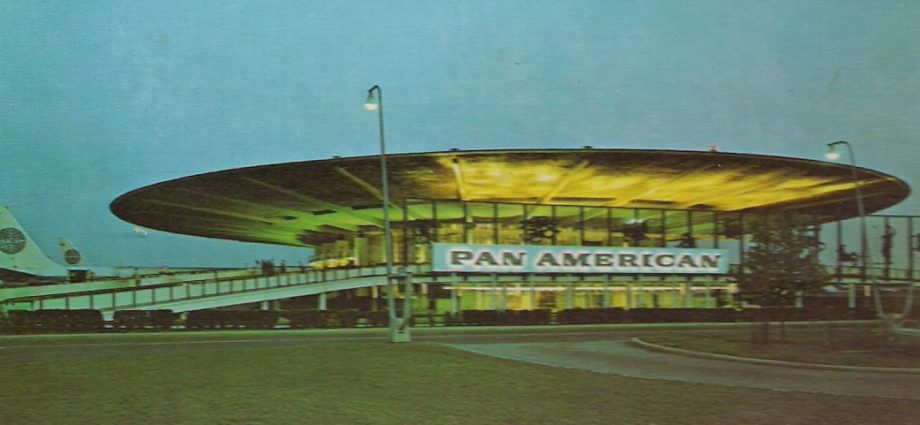

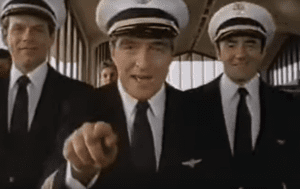
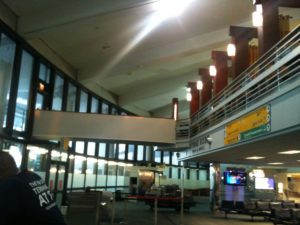
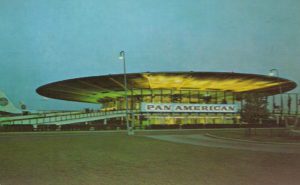
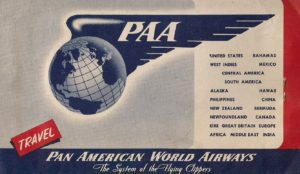
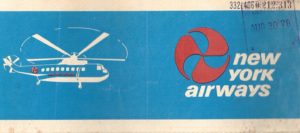
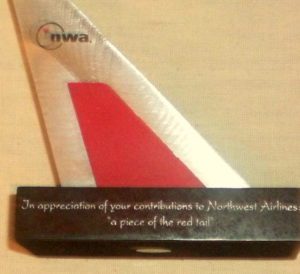
Delta Airlines issued press release statements which are basically PROPAGANDA designed to make the public and potential customers think they are “good guys”; creating jobs, more efficient service, etc. But, if you pay attention and do some research, you will see that they are being DECIETFUL.
In fact, by demolishing the Worldport rotunda, they are TURNING DOWN A GOLDEN OPPORTUNITY to make potential millions from additional travel services and other functions that could be housed in the building. And in addition, they are wasting a MAGNIFICENT BRANDING OPPORTUNITY, using the icon of the Flying Saucer. We DO have an interested investor, but the Port Authority and Delta refused to take their calls.
These are Delta’s four false arguments:
• Terminal 3 is obsolete
• Terminal 3 redevelopment will create jobs and drive the economy
• The airport is so land-constrained that further preservation is impractical.
• Preserving the structure will result in a loss of jobs, lead to passenger delays, and curtail future expansion of JFK airport.
I would like to share elements of Save the Worldport’s proposals in counter to Delta’s statement.
OBSOLESCENCE:
•We acknowledge that the terminal was never designed to handle passenger loads and security requirements on the scale of what it had been handling recently.
•We advocate saving only the original flying saucer portion. Our plan advocates that the structure be restored and re-purposed for non-aviation uses. We are asking for Worldport to be turned into a one-of-a-kind modern public space.
•Viable alternatives exist for which the structure is NOT obsolete. Our investor wishes to fund unique traveler amenities, such as a museum, restaurants, shops, unique traveler comfort stations (sleeping pods and showers as seen in Japan), aircraft observation space, or business meeting spaces, and other modern public uses.
JOB CREATION:
•Delta states that their redevelopment plan will generate more than 10,000 jobs in the region by 2014, including 200 construction jobs throughout the abatement, demolition and redevelopment of Terminal 3. These 200 construction jobs are TEMPORARY jobs that will NOT have any noticeable impact on the economy of New York, a city of 8.2 million, to wit: “The New York State economy added 5,000 private sector jobs in May 2013, for a growth rate of 0.1%. This raised New York State’s private sector job count to 7,449,700. Since the beginning of Governor Andrew M. Cuomo’s administration, the New York State economy has added 336,600 private sector jobs.” This quote is from the New York State Department of Labor (http://labor.ny.gov/stats/pressreleases/pruistat.shtm). The 200 temporary jobs equal just 0.004% (0.00004) of job creation. NEGLIGIBLE.
•The 200 temporary demolition and construction jobs will cease to exist after 2014. But with re-purposing the Worldport rotunda section, the 200 temporary jobs would still be created, since abatement would need to be done regardless, and the rear section of the terminal, which is neither iconic nor historic, could still be demolished. This resulting space would still need to be repaved, and all ancillary work with respect to this project would still need to be done. PRESERVATION WOULD NOT DENY THESE WORKERS THEIR JOBS.
•Preserving the flying saucer would require ADDITIONAL temporary jobs to be created for architects, engineers, renovators and construction workers. The resulting, newly-renovated building WOULD GENERATE THOUSANDS MORE PERMANENT JOBS for traveler services, building maintenance, and security. These would be sustainable, permanent jobs, in contrast with construction, demolition, and paving temporary jobs.
LAND CONSTRAINTS:
•From Delta’s own lease and operating agreement with JFK-IAT, the Terminal 3 property consists of 48 acres. The flying saucer’s roof occupies ONLY 4 ACRES, A MERE 8% OF THE TOTAL SITE
•The saucer building is situated close to land-side, so it will have MINIMAL IMPACT ON AIRCRAFT MOVEMENT around the proposed hardstands or the operation of T2 & T4.
•Only approximately 3 hardstands are lost due to the “flying saucer” remaining in place. Delta (and other airlines) would still benefit from 13 out of the proposed 16 hardstands. These 13 hardstands would still fulfill Delta’s objectives to decrease passenger delays and increase operational efficiency by having aircraft parked and serviced nearby.
•Delta is further expanding T4 by an additional 75,000 sq. ft. to provide 11 more gates for regional operations by 2015. Since JFK is slot-controlled by the FAA, it is reasonable to expect that after this expansion is completed, Delta will move any remaining operations from T2 to this new facility and abandon T2.
•T2 can then be demolished to make room for additional future expansion or more parking. So if the rear section of T3 is reclaimed and T2 is reclaimed, that is a vast open space for future expansion. THEREFORE, PRESRVATION DOES NOT CONFLICT WITH DELTA’S OPERATIONAL NEEDS.
T3 ADAPTABILITY:
•The former TWA Flight Center at JFK was saved and restored. We are very grateful that the TWA building was saved. It is a magnificent building and one of Saarinen’s most memorable works. Yet, it has been sitting empty for nearly 12 years, not collecting any rent. The very nature and design of that building makes it difficult to adapt.
•We have shown here how hardstand operation will not be compromised, more jobs will be created, and even more traveler amenities and conveniences can and will be provided by our proposals, which will greatly increase the quality of traveler (Delta customer) experience.
•We and our supporters feel our ideas for Worldport would result in building for Delta Airlines an UNPARALLELED CUSTOMER EXPERIENCE. Not only that, but Delta should be incorporating and building upon the incredible branding icon of Worldport.
•After studying the layout of the Worldport’s flying saucer rotunda, we feel it is a much more adaptable structure for alternative uses that will more easily attract potential investors and tenants.
•An innovative and willing investor has stepped forward, but Delta and the Port Authority have refused to take their calls.
In light of the above counter-arguments, Save the Worldport’s proposal to preserve the original rotunda and repurpose it for retail profit-generating space DOES make sense.
We recognize the need for safe, efficient operations of Delta aircraft at JFK, but demolition of Worldport is not the answer. Saving the historic rotunda structure will NOT interfere with sufficient space for planned safe and efficient operation.
There is tremendous dismay and public outcry that Delta has chosen to disrespect the esteemed Board of Trustees of the National Trust for Historic Preservation, which includes notable people such as former First Lady Laura Bush. That is not good public or customer relations. It did not escape us, the fact that Delta’s stock price has fallen recently.
Save the Worldport wishes to state that while we appreciate the initiative to create a “tribute”, there really is no substitute for the REAL THING. Our motivation to save and restore the building is so it can continue serving a useful function, while at the same time providing the opportunity for the public to experience it in real life. If one has never stood underneath that massive cantilevered roof, there is no way a photograph can convey the feeling.
The flying-saucer shaped Worldport is one of the most recognizable places in America and represents an important chapter in aviation history. Our nation’s iconic architectural masterpieces deserve better treatment than demolition for airport parking.
Delta says, “Delta continually strives to be a respected community partner in the neighborhoods where we do business and live.” Thousands of Worldport supporters are asking that Delta reconsider their course. We have continually asked politely that they consider our creative alternative plans for this beloved piece of American culture and architectural and aviation history. They won’t know what a gem they had until it’s lost.